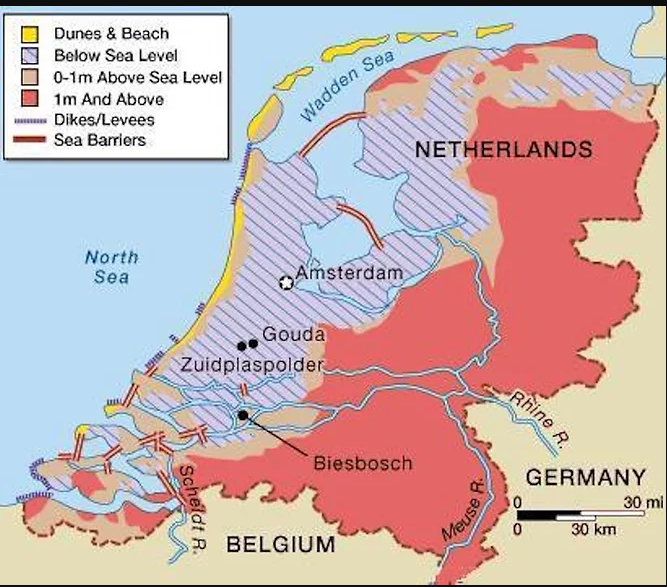
Did you know that the Netherlands is located below sea level? You might be wondering how it is possible that you can still see land instead of only water. The cool thing is that the Dutch have figured out ways to keep the land dry and suitable for millions of people to live on. How? Read this article to find out!
Here you can see which area’s in the Netherlands are below sea level The Netherlands has not disappeared beneath the sea yet due to its Dunes, Dikes, Dames, Floodgates, and Pump houses. In short, this is called the “Delta Network or Program”. This was designed by the Dutchies themselves in 2010.
The reason that our feet are not wet yet in the Netherlands is due to some masterminds that have worked hard to keep the water out. This is an ongoing process and will probably remain this way for many years to come. The Dutch believe they can keep the water out for many centuries and keep us all safe from flooding in the future. What exactly is the Delta Network? Keep on reading!
How Much of the Netherlands is actually below Sea Level?
Approximately 26% of the Netherlands is below sea level. however, 59% of the Netherlands has the possibility of ending up beneath the water when a big storm hits or when the water levels rise. Therefore, it is very important for people in the Netherlands to keep on looking for alternative ways to protect our land.
How Does the Netherlands Keep the Sea Out?
The Dutch are experts when it comes to water, and keeping it away from their land. The people in the Netherlands have been working on ways to be safe from possible flooding for much longer than the Delta Work Exists. The Delta Program, however, Made it possible to take care of the whole water problem as one, instead of a more chaotic structure.In the 20th and 21st centuries, more and more technologies have been developed to keep the water problem “as far away as possible” ;). This is done through several different methods.
Dunes
Dunes are built by big machines that are scooping sand from the bottom of the sea. This sand is piled up and sprouts of seagrass are planted on top to keep the sand in one place. When the sea level increases, the dunes prevent flooding. As you can maybe imagine dunes need continuous maintenance so that they stay up to the correct height. With the current rising sea levels, it is definite that the dunes need to be looked after with a very close eye.
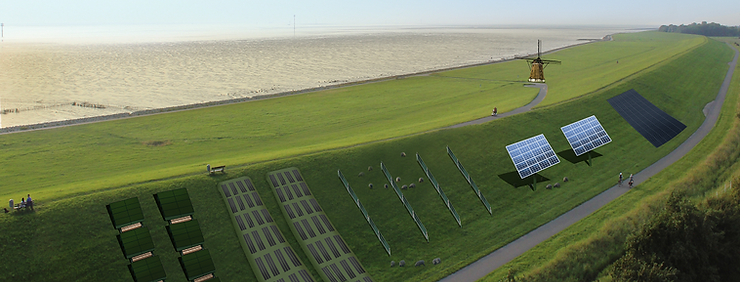
Dikes:
Dikes are structures that are built alongside- or parallel to a river and they look like a small hill (sometimes only about 1 meter tall). They are built so that when the water level of the river rises due to heavy rains, the water (hopefully) doesn’t flow over the hilltop protecting the houses surrounding it. You can see many of these structures when driving or cycling along rivers, or canals in the Netherlands. However, it also happens that the rain was simply too much to bear resulting in flooding. A great example of this is what happened in 2021 in Belgium and the Netherlands. This created a lot of damage and even cost several people their lives.
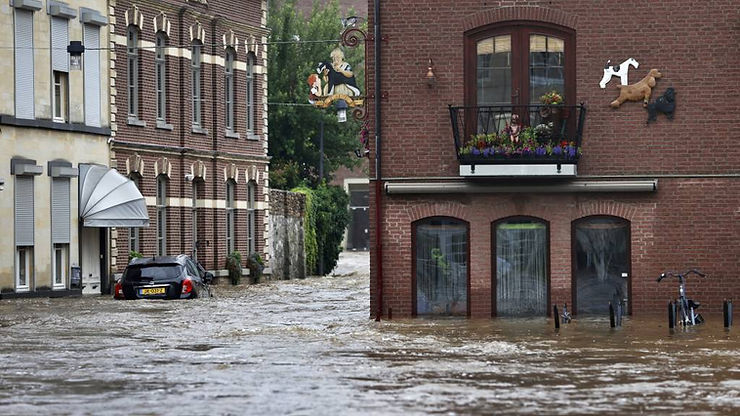
Dams:
Compared to a dike, dams are much larger structures. They don’t only keep the water out but also hold the water in one place. This water can be used for irrigation, human consumption, and/or industrial use.
Floodgates
Floodgates are part of the newer and more modern technologies currently in use. They control the water flowing in and out by opening or closing big gates. When they are all the way down, the water can’t go in or out. If they are left up/open, the water can stream in whichever direction. During storms, the gates are closed to keep the water out and protect the land.
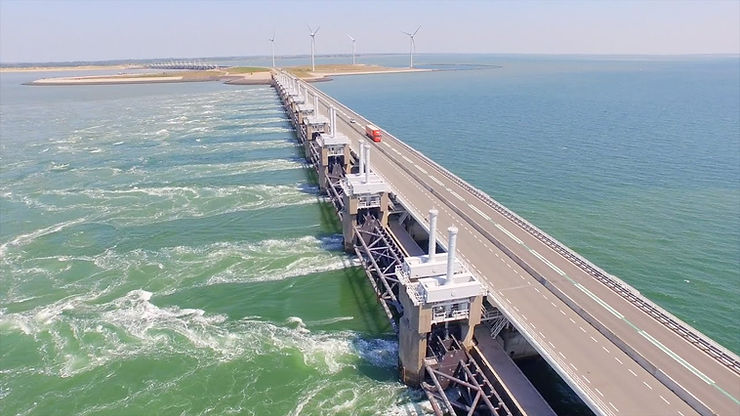
Probably the most important Floodgate in The Netherlands named the ” Afsluitdijk”.
Pump (Pump Houses)
Pump houses are built to move water from one place to another such as drainage for example. In the old days, it was not electrical pumps that pumped the water from one place to the other but windmills! When you visit the Netherlands you can still see these windmills in some places. After all this time, some of them are even still actively part of the Delta Network!
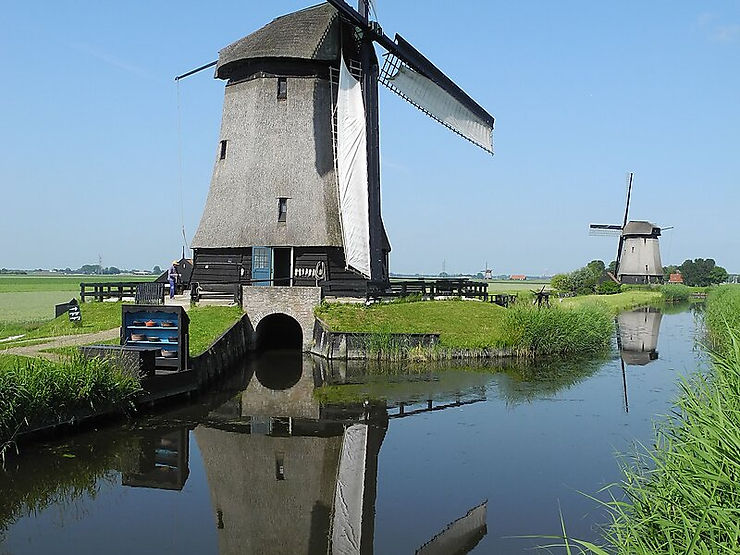
One of the windmales that are still active in named the “Ondermolen” in Nieuwe Driemanspolder All these different flooding measures combined are called the Delta Program or Delta (net)works. In total, the Delta Works consists of 13 sections. This includes dikes, dames, dunes, floodgates, and pump houses. This amazing network has kept the Netherlands safe from rising water levels is known to be part of the “seven modern wonders of the world”.
Will The Netherlands Ever Be Underwater?
As you might know, the water levels are rising. This has an effect on the Western part of the Netherlands. In order for the water to not flood this part of our land, Delta workers must do their jobs well to continue preventing our country from flooding. The rising water levels are a big problem and if the country stays the way it is, chances are that parts of it will be flooded by 2030. Therefore, engineers are working hard to find ways and create technology to prevent the Netherlands from flooding in the future.
Conclusions:
After reading this article we hope that you now have an insight into why the Netherlands is still visible and hasn’t been flooded by the sea yet. It is amazing how countries and people develop ways to prevent disasters from occurring. I guess only the future knows if the Netherlands will always stay above sea level. But for now, engineers are working hard to keep it this way for centuries to come.
Did you like this article and/ or have you seen any parts of the Delta Network yourself? Let us know in the comments!
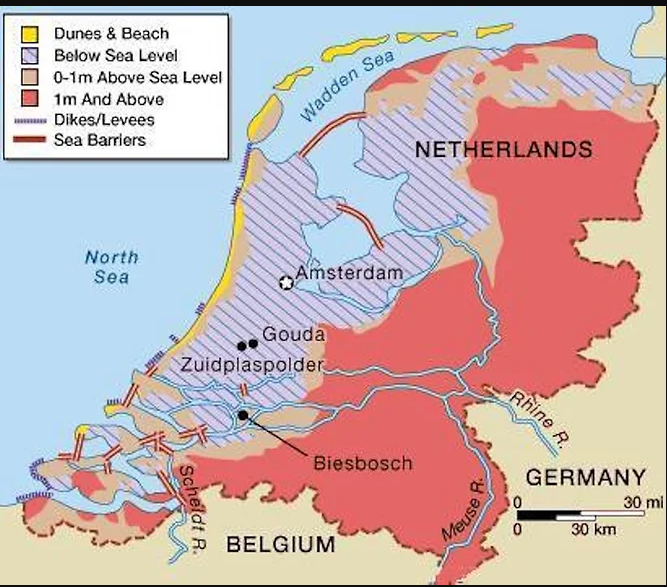












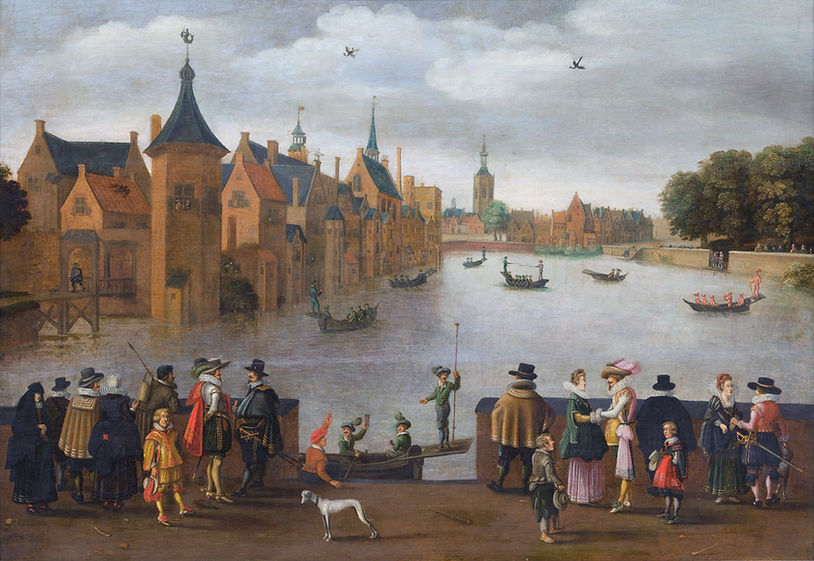
Comments
Very useful article. Very well explained. I literally got answers to my questions.
Good info. Lucky me I reach on your website by accident, I bookmarked it.
I like what you guys are up too. Such clever work and reporting! Carry on the excellent works guys I’ve incorporated you guys to my blogroll. I think it’ll improve the value of my site 🙂